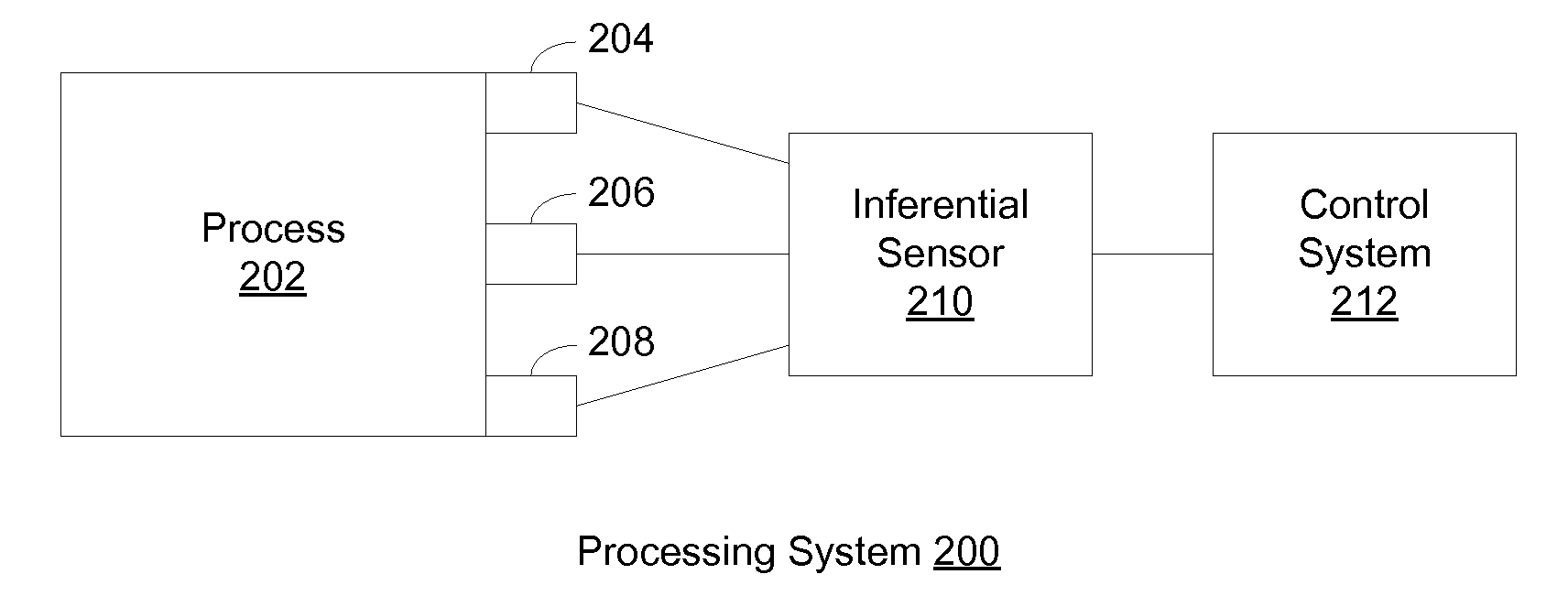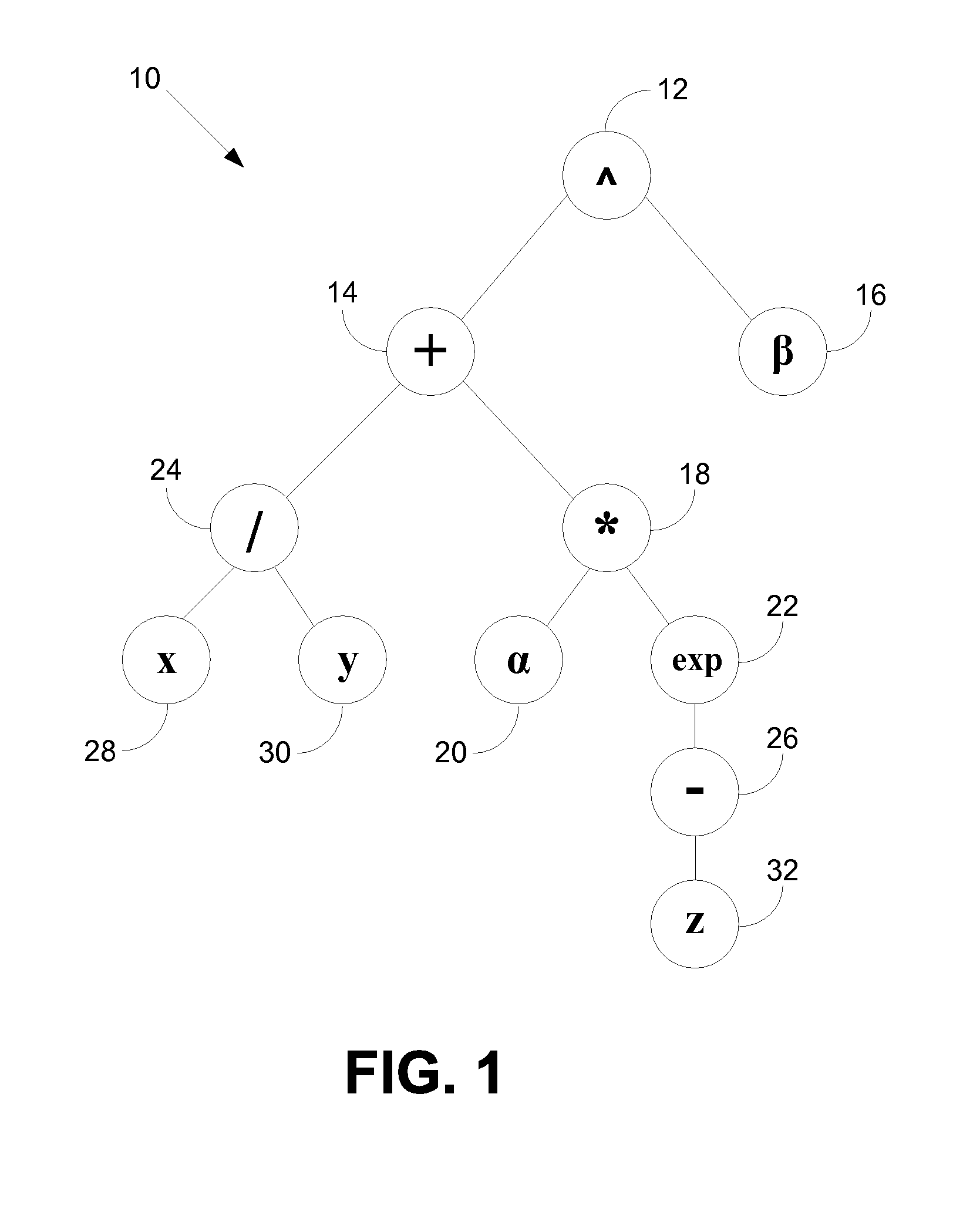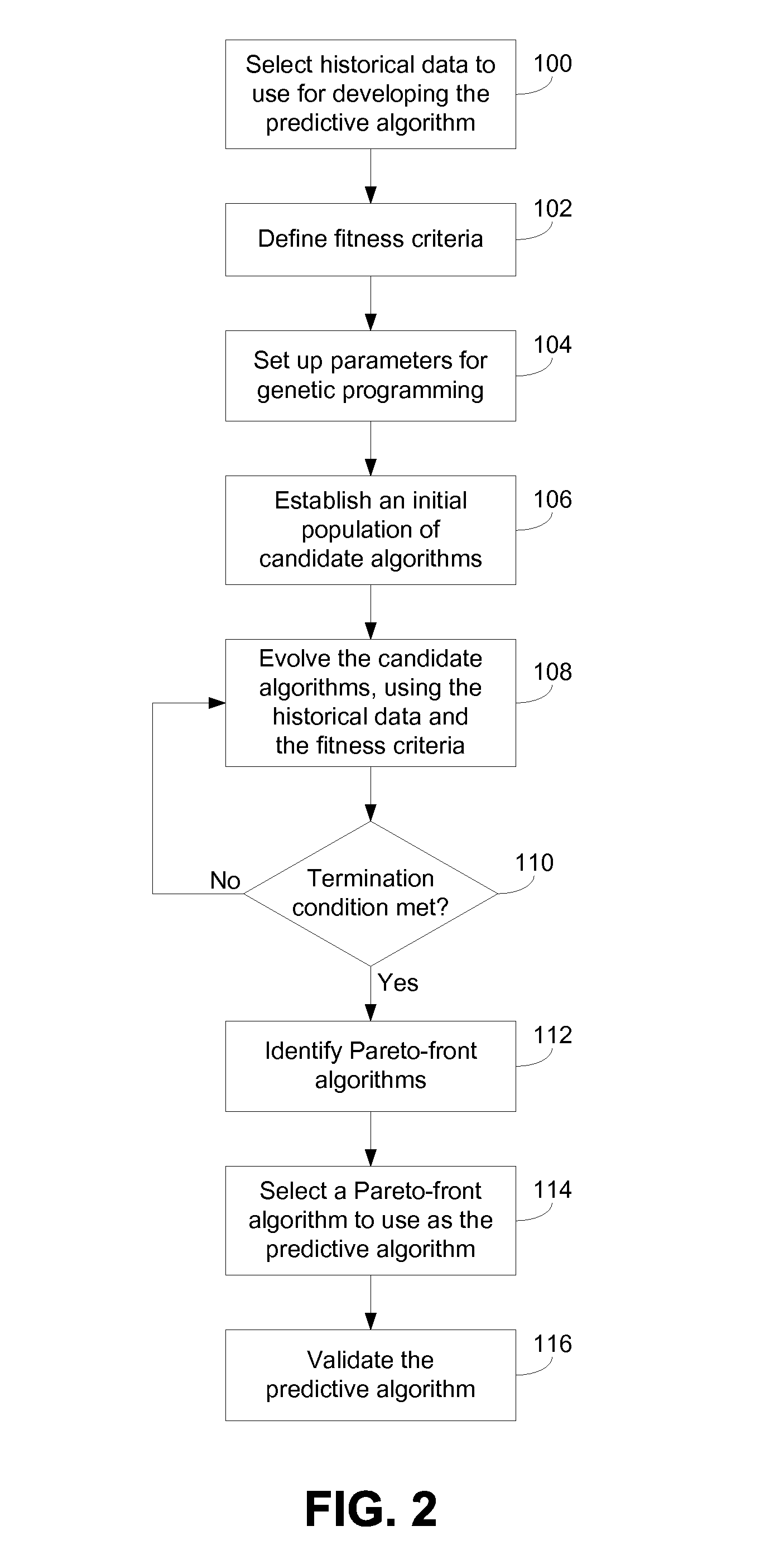Inferential Sensors Developed Using Three-Dimensional Pareto-Front Genetic Programming
a technology of pareto-front genetic programming and inferential sensors, applied in the field of soft or inferential sensors, can solve the problems of limited applicability of linear regression, difficult measurement of other process parameters under normal operating conditions, and often association with neural network models
- Summary
- Abstract
- Description
- Claims
- Application Information
AI Technical Summary
Benefits of technology
Problems solved by technology
Method used
Image
Examples
Embodiment Construction
1. Overview
[0022]A predictive algorithm for predicting at least one output variable based on a plurality of input variables may be developed using a genetic programming technique that applies at least three fitness criteria. The input variables and the at least one output variable could, for example, correspond to various process parameters of an industrial process or any physical, chemical, or biological process. In one advantageous approach, the input variables may correspond to parameters that can be readily measured while the process is on-line, e.g., using hardware sensors, whereas the at least one output variable may correspond to one or more parameters that are more difficult to measure. In this way, the predictive algorithm may be used in an inferential sensor to infer the values of one or more difficult-to-measure process parameters (the output variables) based on the values of easily-measured process parameters (the input variables). The output of the inferential sensor ma...
PUM
 Login to View More
Login to View More Abstract
Description
Claims
Application Information
 Login to View More
Login to View More - R&D
- Intellectual Property
- Life Sciences
- Materials
- Tech Scout
- Unparalleled Data Quality
- Higher Quality Content
- 60% Fewer Hallucinations
Browse by: Latest US Patents, China's latest patents, Technical Efficacy Thesaurus, Application Domain, Technology Topic, Popular Technical Reports.
© 2025 PatSnap. All rights reserved.Legal|Privacy policy|Modern Slavery Act Transparency Statement|Sitemap|About US| Contact US: help@patsnap.com



